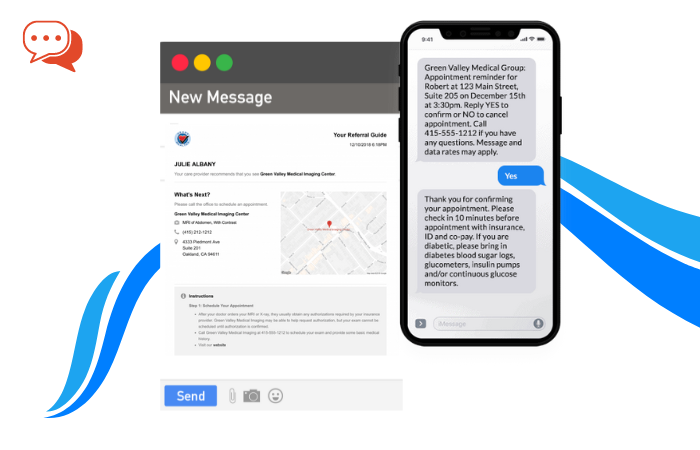 Dr. Billings explores the costly darkside of EMR implementations significant maintenance, development and consultancy costs after implementing an EMR system
Dr. Billings explores the costly darkside of EMR implementations significant maintenance, development and consultancy costs after implementing an EMR system
Faced with healthcare reform and any number of other enduring challenges, hospitals shouldn’t expect next year to be any easier than the one that’s currently winding down. Yes, that’s my grand prognostication for 2013—things will still be difficult.
While I may sound glib, in all seriousness I want to focus on one challenge among the many, that of operational efficiencies and health IT affordability. Meaningful Use is the specter that continues to hover over hospitals and health IT, and in large measure the response of hospitals to being haunted by federal incentives has been to purchase huge, massively expensive solutions like Epic and Cerner. Both systems have an impressive number of bells and whistles, many of which actually improve care. And both companies are buffed to a high sheen in their presentation of solutions it seems only a damned fool could reject. Reportedly, Epic’s Judy Faulkner selects company clients, not the other way around. Who wouldn’t want to be part of the club? It’s the place to be, after all.
Unless, of course, you want to run your hospital budget in the black.
Dartmouth-Hitchcock Medical Center (DHMC) spent about $80 million on Epic in 2011 and since then have said they expect weak operating performance in the near future in part due to the costs of their health IT system.
In truth, DHMC got something of a deal, at least by comparison. As widely reported in 2012, look at what other hospital systems spent on Epic:
- Duke University Health System – $700 million
- Boston-based Partners HealthCare – $700 million
- University of California, San Francisco – $150 million
And these are just the initial contract values. Especially with higher-priced proprietary systems, it’s not uncommon for healthcare organizations to incur significant maintenance, development and consultancy costs after implementing such a platform.
If you’ve paid attention to health IT, all of the previous information will not come as a surprise. So let me ask a follow-on question: Do you really think American healthcare, with costs already the highest in the world and continuing to rise, can absorb expenses like these? Do you believe these systems can reduce operating costs enough through greater efficiencies to make the investment worthwhile? Because, we already know the federal government is only covering a small percentage of proprietary costs through Meaningful Use.
I don’t believe healthcare can afford Epic and Cerner, and I doubt you do either.
And it’s not like they’re the only options available. Hospital administrators would do well to look at affordable alternatives like open source platforms. Admittedly, I’m somewhat biased here since I work for a company that provides an open-source platform. But I will try to convince all but the most jaded by suggesting you evaluate and buy any of the affordable health IT systems out there. Medsphere is not the only provider of an open-source platform based on the VA’s VistA system; plenty of proprietary vendors offer good products that cost millions less than Epic.
The truth is that administrators and clinicians don’t really love any of the health IT platforms available to them. It’s not hard to find physicians who think Epic is clunky and unintuitive, as some doctors at DHMC expressed in a Dartmouth Medicine article. Medsphere clients are really looking forward to future releases and the new functionality they think will make their jobs easier. None of us is keeping doctors deliriously happy.
But care can get better and workflows do improve when hospitals and health systems make a concerted effort to implement and use functional systems. Look at the self-serving example of the West Virginia Department of Health and Human Resources (WV DHHR). While the West Virginia University Medical Center selected Epic for a reported $90 million, WV DHHR purchased our OpenVista solution for about one-tenth the price: And the system is working in seven state hospitals because the people who run those hospitals embraced it and had realistic expectations about what it and they could do. This isn’t an aberration. The other VistA-derived open source organizations—DSS, ClearHealth, WorldVistA—can share similar stories. Meditech and CPSI, among others, can also identify hospitals where care has improved because the staff embraced the solution and adapted to the new electronic age. The important fact is that in none of those examples is the health IT platform threatening to bankrupt the hospital. And we haven’t even introduced the idea of interoperability, which open-source platforms do in spades and proprietary systems do begrudgingly. The bottom line is this: While EHR platforms are becoming essential, budget-busting health IT investments are not. Recent high-profile case studies show this, and I expect that the first health-IT fueled bankruptcy is not that far off. This is not what we need. At a time when budgets remain tight and under heavy scrutiny, medical facilities should, at the very least, consider other viable options. It’s the responsible approach to take. Dr. Edmund Billings is the Chief Medical Officer at Medsphere where he blogs regularly on healthcare IT.
WV Dept of Health and Human Resources – OpenVista
West Virginia University – EPIC
7 Hospitals
7 Hospitals
776 Beds
526 Beds
$9 million
$92 million










